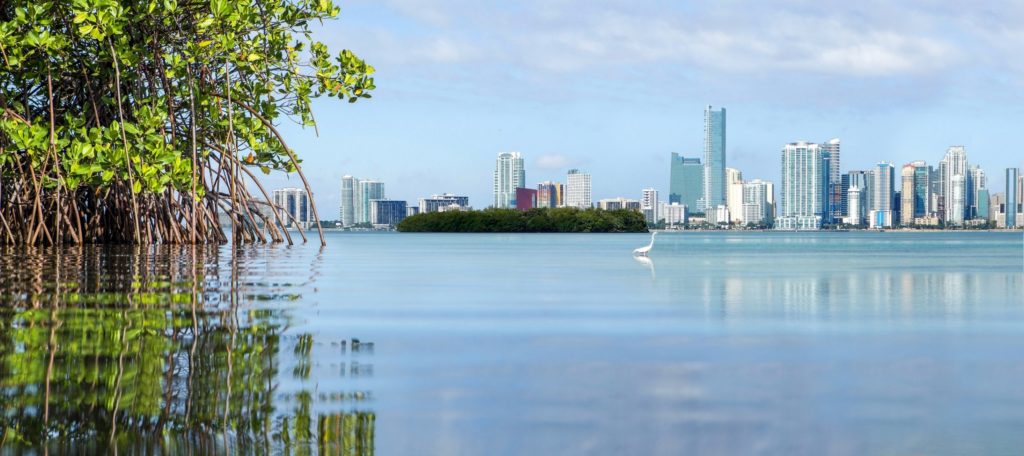
Resilience
After Hurricane Andrew in 1992, the City of Miami responded by updating its building code to make structures withstand high winds. The storm also gave rise to the modern-day federal, state, county, and city emergency response system. 30 years later, and after numerous other damaging storms, communities like Miami are increasingly focused on becoming more resilient, or how to prepare and plan for, absorb, recover from, and more successfully adapt to the adverse events. The region is expected to experience an increase in rainy season months, more high heat days and more frequent storm events. These issues will be compounded by sea-level rise and associated flood risks like king tides and tidal flooding.
On the basis of these projections, a proactive approach that addresses these issues and challenges is necessary. In 2016, Miami became part of the Rockefeller Foundation’s 100 Resilient Cities initiative and added a chief resilience officer to its city staff to focus on these issues. In addition, a number of studies, plans, and strategies have been recently completed or are currently underway, including Resilient305, Miami Forever: Climate Ready strategy, the USACE Back Bay study, the Miami Baywalk, and Riverwalk Design Guidelines, and the city’s pending update to its stormwater master plan.
We at the Miami DDA believe we are all in this together. Our commitment to balancing environmental sustainability with our peoples’ peace of mind is evidenced in the many infrastructural investments we’re making Downtown. We’re dedicated to protecting our 110,000 residents, our 250,000 daytime population, and our $39 billion in market value of the properties in Downtown and adjacent neighborhoods. We’re committed to weathering any storm and overcoming any challenge and change – and emerging as the most resilient Downtown in the country’s most resilient city.
Project Pages


